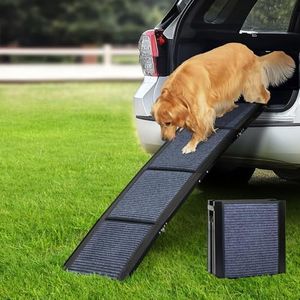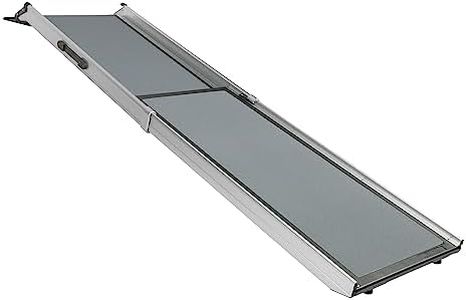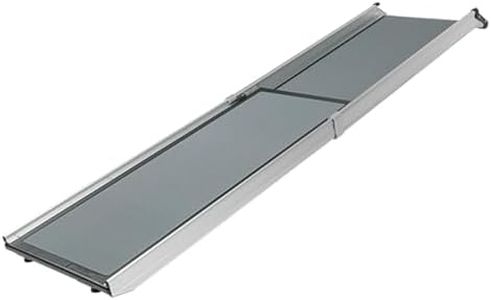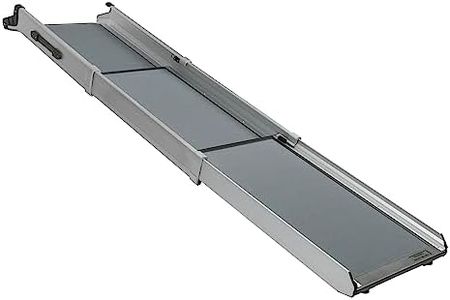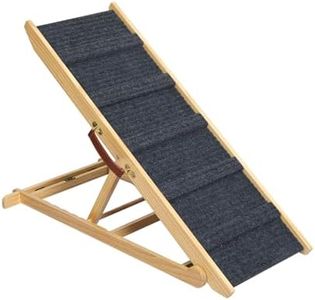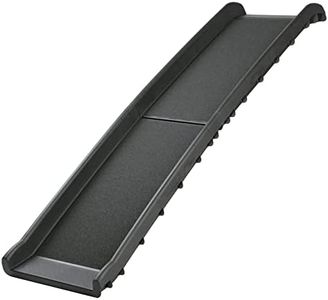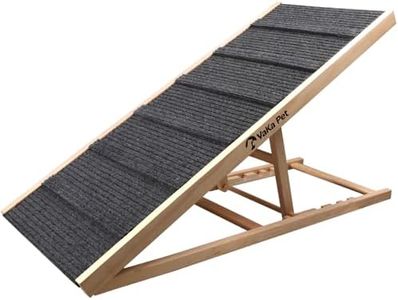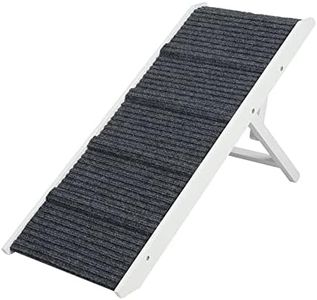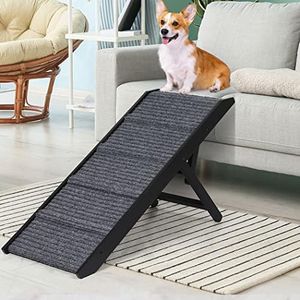We Use CookiesWe use cookies to enhance the security, performance,
functionality and for analytical and promotional activities. By continuing to browse this site you
are agreeing to our privacy policy
10 Best Folding Dog Ramps
From leading brands and best sellers available on the web.Buying Guide for the Best Folding Dog Ramps
When choosing a folding dog ramp, it's important to focus on features that ensure safety, practicality, and comfort for both you and your pet. The main goal is to help your pet access vehicles, beds, or other elevated surfaces easily and without risk of injury. To make a good decision, compare the essential specifications to your dog’s size, weight, and mobility needs, as well as the space where you plan to use the ramp.Length and SlopeThe length of the ramp determines how gentle the incline will be when it's set up. A longer ramp creates a less steep slope, making it easier and safer for older or smaller dogs to climb. Ramps generally range from short (about 3-4 feet), medium (about 5-6 feet), to long (7 feet or more). Shorter ramps are more portable but can be too steep for some pets, especially if the surface being accessed is high. For dogs with joint issues or elderly dogs, a longer ramp is usually better as the incline will be easier to manage. Consider the height you need to reach and your pet’s mobility when selecting the ramp length.
Weight RatingThe weight rating tells you the maximum weight that the ramp can safely support. It’s important because a ramp that's not sturdy enough can bend or break, putting your pet at risk. Ratings are generally grouped into under 100 lbs for small pets, 100-150 lbs for medium pets, and 150+ lbs for large breeds or multiple pets. Always choose a ramp with a rating higher than your dog's weight to ensure safety and long-term durability.
Surface Material/TractionThe ramp’s surface material affects grip and prevents slipping. Surfaces can be covered with carpet, rubber, or textured plastic. Carpeted ramps provide soft traction for most breeds, textured or rubberized surfaces offer excellent grip, especially for wet paws. Smooth surfaces are not recommended unless your dog is exceptionally sure-footed. If your pet has mobility issues or is nervous, go for a ramp with a high-traction surface for peace of mind.
Portability and FoldabilityHow easily you can carry and store the ramp is determined by its portability and folding mechanism. Single-fold, bi-fold, or tri-fold designs reduce the ramp’s size for transport. Lighter ramps are easier to manage but may be less sturdy. Consider how and where you'll use the ramp; for frequent vehicle access or travel, easier folding and carrying is particularly desirable. If storage space is limited at home, a compact folding design will be valuable.
WidthRamp width impacts your pet’s confidence and comfort when using it. Ramps typically range from narrow (10-12 inches), standard (13-16 inches), to wide (17 inches or more). Larger dogs and pets who need more stability benefit from a wider ramp, while small dogs can use narrow ones. Consider your dog’s size and stability—bigger, less agile dogs will need a wider ramp to feel secure.
Weight of the RampThis specification indicates how easy the ramp is to move and set up. Lightweight ramps (under 10 lbs) are effortless to handle but may not support larger pets well. Medium-weight ramps (10-16 lbs) balance ease of use with sturdiness, while heavy ramps (over 16 lbs) are very robust but can be awkward to move. Choose a ramp you can comfortably carry and unfold, especially if you’ll use it often.
Stability FeaturesFeatures like non-slip feet, locking latches, and side rails add safety for your pet. These features minimize shifting during use and provide additional confidence for both you and your dog. If your dog is anxious or unsteady, picking a ramp with added stability features is important.

